For four minutes you can feel the tension build in the air. Salt is sprinkled, feet are stamped and intimidation is radiated. A four-minute build-up for a 10 seconds release, but what a release! The collision of power and weight coming together can be felt in the entire room and I love it.
That’s, in essence, is what sumo wrestling is all about. Our incredible holiday to Japan just happened to coincide with the September Sumo tournaments, which take place on a yearly basis. And we were lucky enough to get some tickets for the Tokyo tournament at the famous arena Ryōgoku Kokugikan in Sumida.
SO WHAT IS SUMO WRESTLING?
So what is Sumo wrestling? For those that have never heard of it, don’t make the mistake of comparing it to WWE wrestling – there’s no Hulk Hogan hitting someone over the head with a chair here.
Sumo is an ancient act of showing strength where two opponents attempt to either throw each other out of the ring or force a part of their opponent’s body (other than the soles of their feet) onto the floor. Dating from more than 2000 years ago, it is one of Japan’s oldest martial arts if not the oldest.
However, it didn’t start out as a sport, it was actually a ritual related to the Japanese Shinto religion. Indeed some religious trappings still exist in the sport these days.
The referees dress like monks and at the beginning and end of each match, several Shinto rites – such as the chasing off bad spirits with the sprinkling of salt- are carried out. In the early days, wrestlers would just fight wherever they were told with no actual defined space other than the circle formed by the ritual’s spectators.
It wasn’t until the 16th century that Oda Nobunaga created the first actual defined ring. Indeed it was during the Edo period that Sumo took on the form it is known for in modern times.
The Edo period was a time of relative peace in Japan and the country was united under the Tokugawa family. For this reason, there weren’t many wars for the samurai to take part in. However, there was still a very large amount of samurai. The samurai had to find something to do with their spare time, and so some turned to sumo.
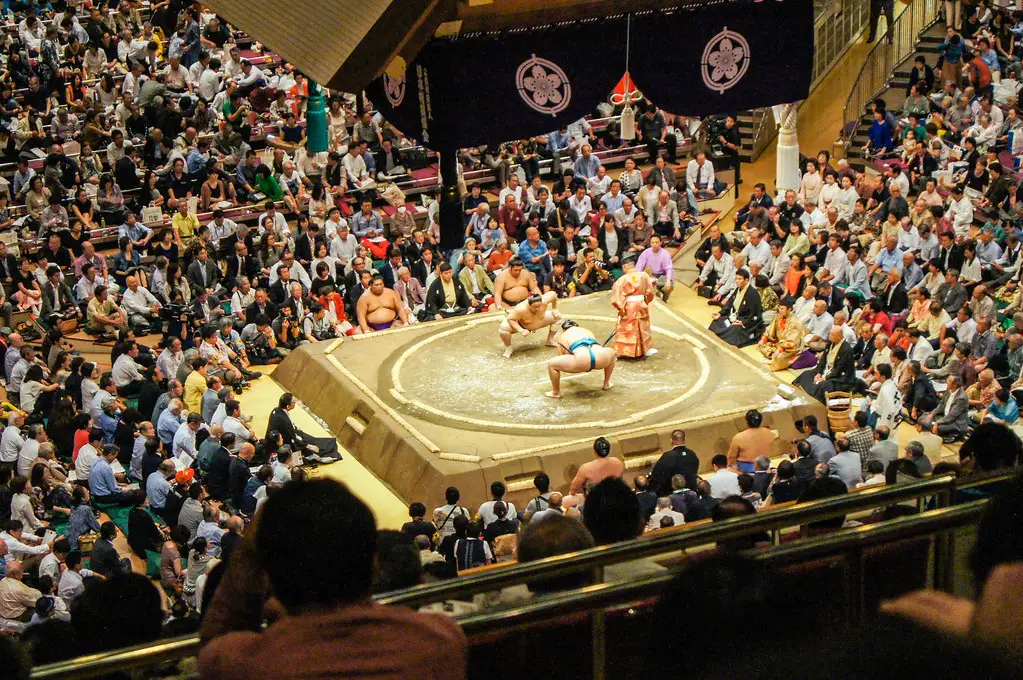
A RIKISHI WRESTLER’S LIFESTYLE
Rikishi is the Japanese word for a sumo wrestler.
These giants spend their lives preparing for tournaments and don’t live conventional lives. From a young age, kids take part in sumo classes much like children in western society might join a football club. As they get older they go on to join a sumo stable, known as a Heya, where they sleep, eat, and get trained in the art of sumo wrestling.
The day he joins a Heya, sumo becomes the Rikishi’s entire life. Even the way the wrestler dresses is dictated by the strict traditions of the sport. A wrestler is expected to grow his hair long so that he can form a top knot on his head (called a chonmage), much like the hairstyle of samurai in the Edo period. He is also expected to wear a traditional sumo outfit at all times, whether he is indoors or walking about in public.
All sumo stables have a strict hierarchical order. A wrestler’s daily routine depends entirely on his position in this hierarchy. Lower-rated sumos are expected to get up early to prepare food for the higher-rated wrestlers. They also have to keep the stable clean. It’s pretty simple. The higher sumo is ranking the better his lifestyle will be – he will get to eat first and will also be paid more for tournaments.
A sumos life can be very hard. The workout regime borders on the extreme and life is very regimented. The best sumo wrestlers are huge but smaller, lighter wrestlers can sometimes outmaneuver their larger opponents. In general however the bigger the wrestler, the more likely he is to win.
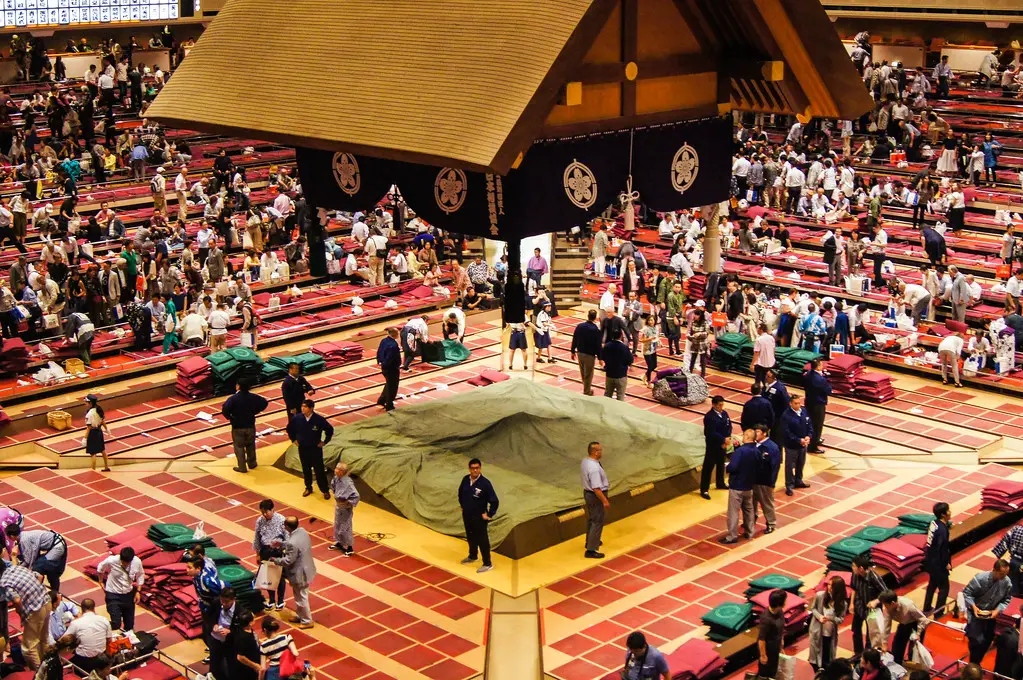
RYOGOKU SUMO WRESTLING ARENA
The sumo wrestling arena is made up of an extremely large seating area and a small clay square platform right in the centre where the fight takes place.
The ring, which is called dohyo, is made up of straw and sits on top of the clay and sand platform. Above this platform is a roof that resembles a Shinto shrine hailing back to the religious beginnings. Dangling from the corners of the roof are coloured tassels that represent the four spirits of direction.
The seating areas range from standard western-style chairs that circle the arena on balconies and cushions on the ground on the same level as the ring. Whilst popular for their proximity to the match, these seats can be dangerous as wrestlers have been known to go flying into the spectators and crushing them.
The pillows on the ground floor are used both for sitting upon during the match and then for expressing disappointment. If a favoured sumo wrestler loses they are frequently thrown in the air after the match.
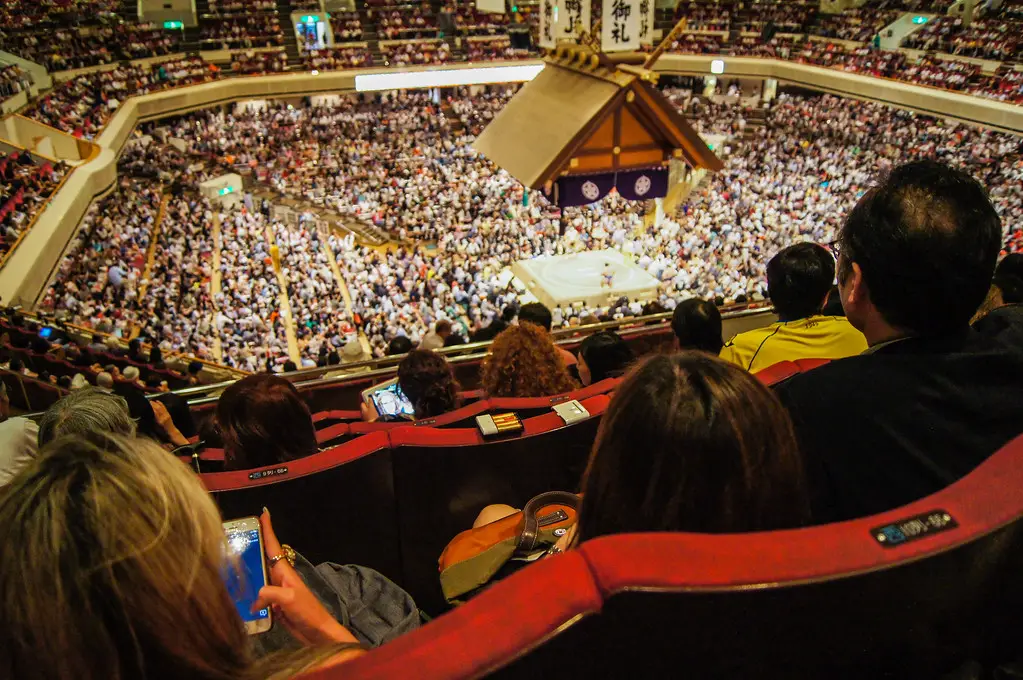
SUMO MATCH DAY
On the day of the tournament, the wrestlers begin the match by coming out in a line carrying flags that represent themselves, their sponsors and their previous wins. This takes some time as each wrestler gets their turn and sometimes their line-up is huge, especially for the highest level sumos (Yokozuna).
Each match consists of one round of two opponents. Before the wrestlers begin each fight they sprinkle some salt around the ring to purify it. They then take up their positions, in a low crouch facing each other.
For several minutes the wrestlers eye each other up, dropping themselves and rising up again. This is a form of intimidation. It is intended to put off the opponent.
Any second now the wrestlers will collide into each other and hit each other hard. As soon as their bodies meet the sumo wrestlers will try to grab, toss, push and pull each in order to force a win.
Within seconds one wrestler might give by a fraction and will immediately be crushed by his opponent, ending the match. The decision of the referee and judges is final and the wrestlers and the fans never complain.
Match after match takes place until the final winner is decided. The winner of the day’s tournament gets the honour of performing the Bow Twirling ritual as well as receiving a large sum of money.
The winner of the overall tournament becomes yusho and is given the Emperor’s Cup, which he then has to return at the next tournament.
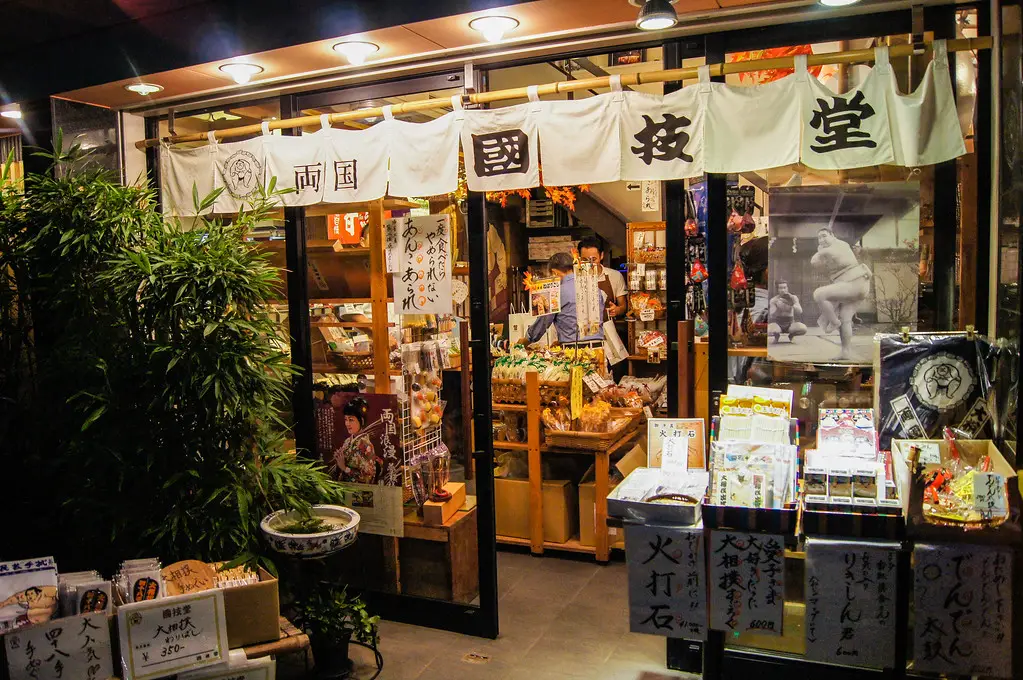
AFTER THE MATCH
Sumo wrestling has a long history with the Japanese people.
After each tournament spectators get the opportunity to actually meet some of the contestants. One can for instance purchase a signed poster or even take a picture with the winner.
The streets fill up with spectators heading home.
This, however, is also a great time to head to a local eatery to enjoy a bowl of Chankonabe. This traditional sumo meal is high protein (obviously as sumo wrestlers need to build-up their mass), so be sure to have an empty stomach if you plan on finishing it.

SOME FINAL FACTS ABOUT SUMO
- Originally sumo wrestlers were samurai looking for extra cash or something to fill their time, this meant the body shape of the soldier wasn’t large like today. Sumo wrestlers were in fact slim. Fat soldier could hardly fit in armour never mind outmanoeuvre the enemy.
- The Kokugikan, Tokyo’s Sumo Stadium, seats over 10 000 visitors and hosts three of the six sumo tournaments (in January, May and September).
- The number of Japanese sumo wrestlers have started to shrink these days so to fill the spaces foreigners have joined in. Though the numbers are small the gaijin sumo wrestler is starting to make waves.
- There is a Yo-kai known as a kappa, a small reptile like river creature that tries to drag victims into the waters to drown them. A potential way to beat this beast is to offer a sumo wrestle match – just be sure to win.
- Popularity of sumo has unfortunately been taken over by baseball and football in Japan with the younger crowd. This has led to the average age of fan being 50 years old. A shame as it is a great sport.
FINAL THOUGHTS
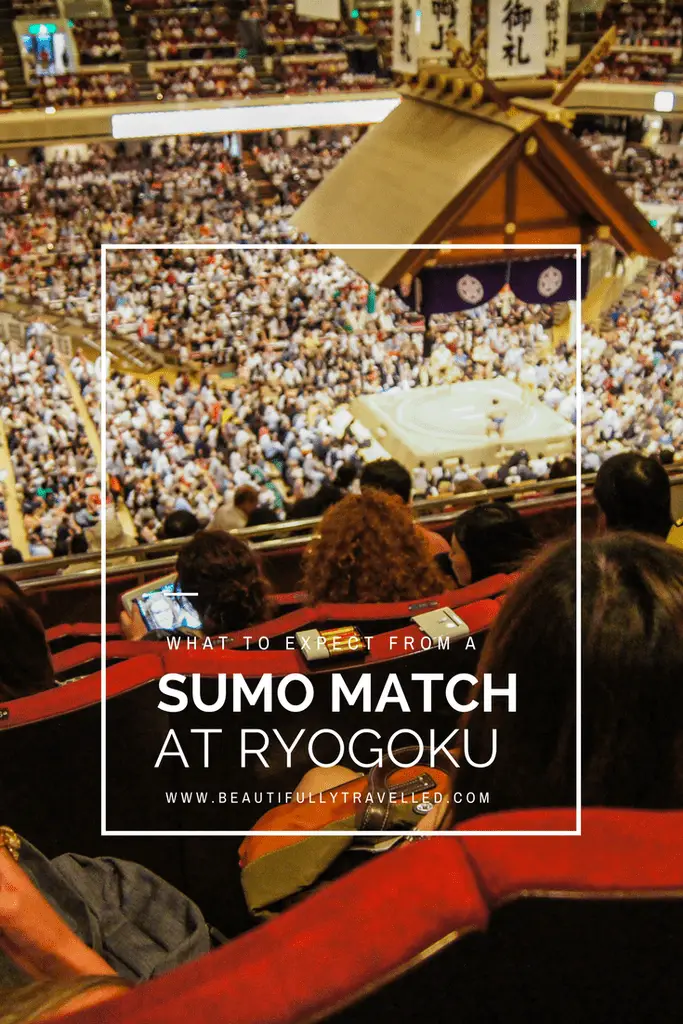

I’d never seen an actual game of sumo before I went to Japan but I certainly don’t regret attending the tournament as I am now hooked.
Whenever the sumo tournaments come up in Japan I always get NHK World, the Japan channel, on and watch it daily.
If you ever get the opportunity to see the sport go to the website and grab some great tickets. The best way to fully grasped the beauty of Sumo is to attend a Sumo Tournament at the Kokugikan.
In order to acquire tickets to a Sumo Match, you will need to contact the official vendor through buysumotickets.com.
Alternatively, if you are lucky, you might be able to find a couple of tickets in a local convenient store.
For more information about what to do in Tokyo check-out my One-week itinerary for Tokyo.
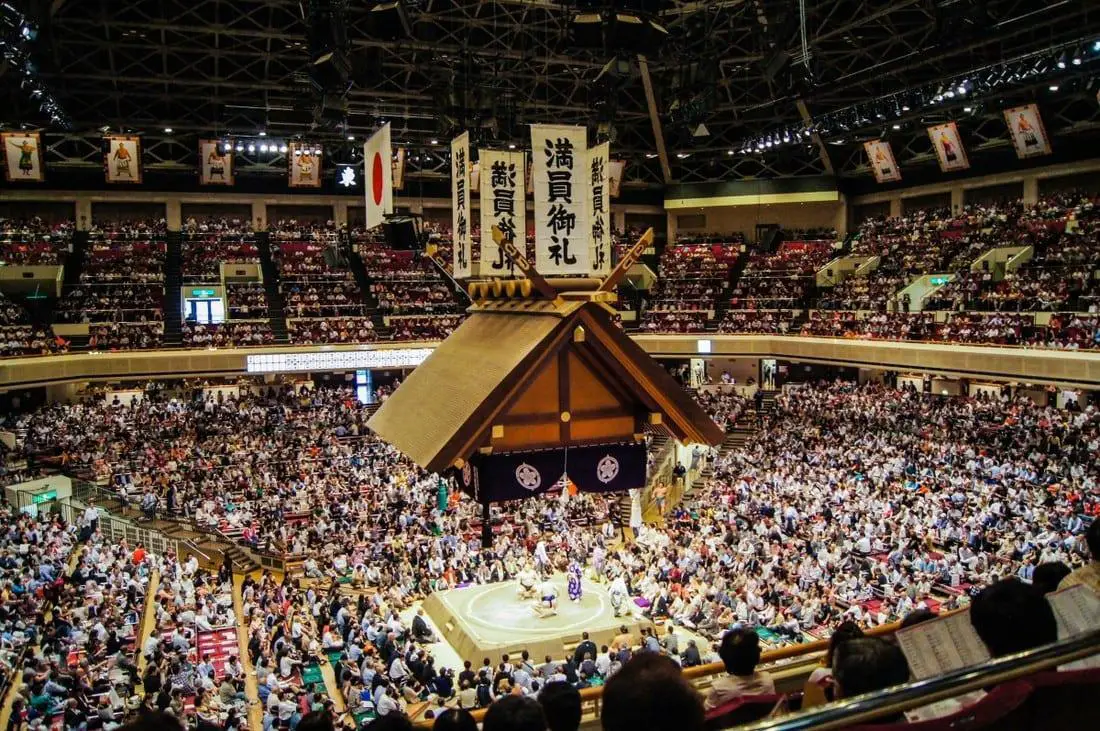
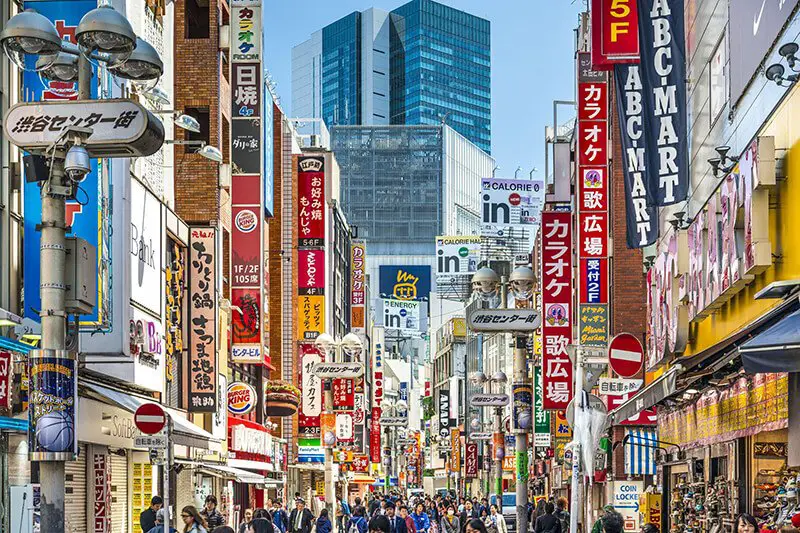
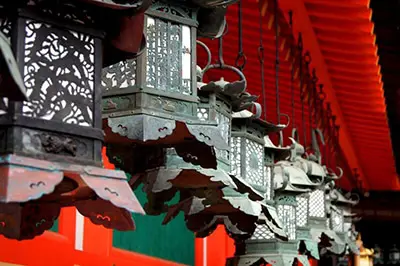



This is so cool! Hope the sumo experience was awesome. Man would love to experience the Sumo match.
This looks awesome! Hope you have (had) a nice weekend! 🙂
Lisa | Joy Della Vita Travelblog
Thanks Lisa! Have you ever been to Japan? And yes I had a wonderful relaxing weekend.